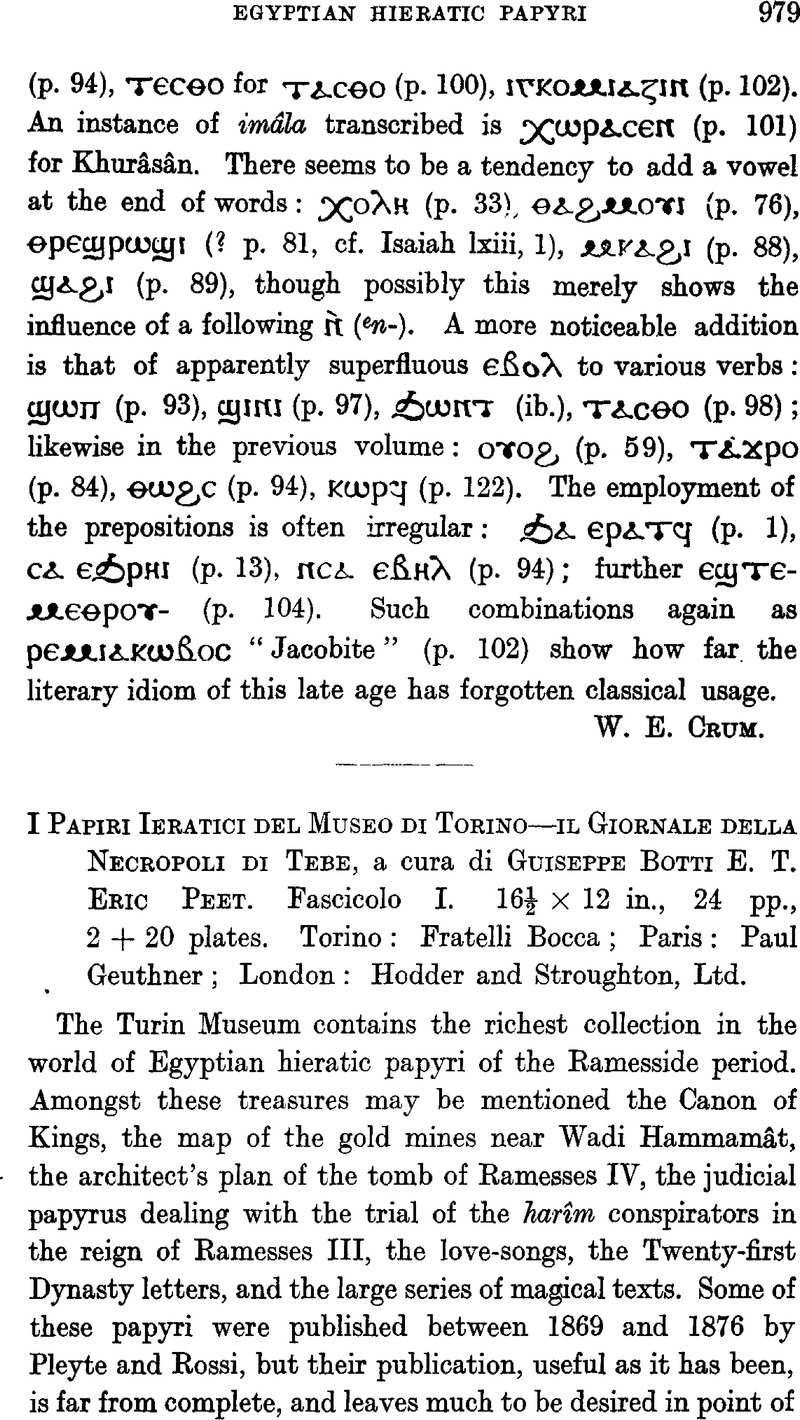No CrossRef data available.
Published online by Cambridge University Press: 15 March 2011

page 981 note 1 In printed type the sign ![]() has to do duty for two distinct birds. The first is the Egyptian Vulture (Neophron percnopterus), which has the value
has to do duty for two distinct birds. The first is the Egyptian Vulture (Neophron percnopterus), which has the value ![]() , and the second is the long-legged Buzzard (Buteo ferox), value tyw. The conventional type of the latter,
, and the second is the long-legged Buzzard (Buteo ferox), value tyw. The conventional type of the latter, ![]() , is unsatisfactory because the tuft on the breast of the bird corresponds to nothing in nature, but is derived from the diacritical mark in its hieratic counterpart.
, is unsatisfactory because the tuft on the breast of the bird corresponds to nothing in nature, but is derived from the diacritical mark in its hieratic counterpart.
page 982 note 1 E.g., pl. ix, line 4; x, 10, 12; xi, 3; xii, 4, etc.
page 982 note 2 Similar journals have been found written on the back of literary papyri, e.g. Anastasi III, Leiden I, 350, Turin Love-Songs, etc. These are a few of the many instances of economy in the use of papyrus as a writing material, which must have been valuable, and too costly to waste.
page 982 note 3 The numbers of the various fragments, most of which have not previously been published, and their mutual positions is shown diagrammatically on pls. A and B.
page 983 note 1 Papyrus Leiden I, 346, 2, 7 ff.
page 983 note 1 Pl. xiv, lines 6–9.
page 983 note 3 Journal of Egyptian Archæology, vol. xi (1925), p. 49 ff.Google Scholar In this important article Professor Peet shows how the Necropolis Journal links up with the events recorded in the juristic papyri of the British Museum.
page 984 note 1 The word is lost in a lacuna.
page 984 note 2 Plate xv, line 18 (line 3 of plate).
page 984 note 3 Ibid., lines 21–3.
page 985 note 1 Since this was written the second and third parts have appeared.